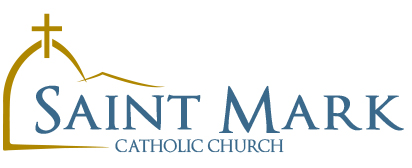Patron Saint
St. Mark, also known as John Mark, was one of the four Evangelists. A member of the tribe of Levi, St. Mark was born in Northern Africa in the region of Gyrene, one of the five Western Cities of Libya, in the small village of Aberyatolos. His Jewish name, John, means “the kindness of God”, while his Roman name, Mark, means “the hammer”. As a young Levite, Mark received a thorough education and was able to read and write multiple languages, making him well-suited for his task of Evangelist. His family moved to Palestine following Barbarian raids in Northern Africa.
![]() Mark’s family was closely associated with the Apostles. His mother was one of the “Marys” who followed Christ. The early Christians often gathered at her house and she was highly esteemed. Mark’s father, Aristopolos, was a cousin to the wife of St. Peter. There is also evidence that Mark was related to St. Thomas. Mark therefore grew up in a family that was closely associated with Christ.
Mark’s family was closely associated with the Apostles. His mother was one of the “Marys” who followed Christ. The early Christians often gathered at her house and she was highly esteemed. Mark’s father, Aristopolos, was a cousin to the wife of St. Peter. There is also evidence that Mark was related to St. Thomas. Mark therefore grew up in a family that was closely associated with Christ.
Mark is also considered to be the young man who carried a pitcher signaling that his home would be used for the Last Supper (Luke 22:10-12) This same house would later be used for the coming of the Holy Spirit on Pentecost. Mark’s home was the first Christian Church. When St. Peter was freed from prison he went directly to the house of Mark. It is also commonly held that Mark tasted the wine that Jesus had transformed from water at Cana.
After Christ’s Ascension, Mark accompanied Peter on his missionary trips. Mark’s first convert was his father, Aristopolos. While traveling to Jordan, Mark and his father were attacked by a lion and a lioness. Fearing an imminent death, Aristopolos requested Mark to flee, offering himself as victim to the lions. St. Mark answered by appealing to Christ saying, “Oh Christ, Save Us!” The lions immediately departed. The winged lion is the symbol of St. Mark.
Mark, who accompanied Peter to Rome, is said to have preached the Gospel in Venice and Aquila. To this day, the Venetians hold St. Mark to be the father of their faith. The Basilica of St. Mark is located in Venice. After preaching in Italy, St. Mark traveled to Lebanon. He is thought to have reached Mt. Lebanon and served as the first Bishop of Gobayel. After serving in Lebanon, Mark journeyed to Alexandria, where he is considered to be the father of the Egyptian Church. Mark began the theology school of Alexandria which would grow to be the center of Christian learning and culture over the next few centuries.
St. Mark was martyred in Alexandria. A rope was tied around his neck and he was dragged to death. In the middle ages merchants from Venice stole his remains bringing them to Italy. In 1968 the Italian government returned many of the relics of St. Mark to Egypt.
The Feast of St. Mark is celebrated on April 25th. St. Mark is the patron saint of notaries, attorneys, lawyers, barristers, captives, prisoners, imprisoned people, glaziers, and stained glass workers. St. Mark is the patron saint of the cities of Boretto, Creazzo, Pordenone, and Venice in Italy; Egypt, Infanta, the Philippines, the Diocese of Venice, Florida, and the Ionian Islands. He is also the patron saint of lions, and his patronage is against impenitence, insect bites, scrofulous diseases, and struma.
St. Mark is represented by the lion, the lion in the desert, the winged lion, the bishop on a throne decorated with lions, as a man helping Venetian sailors, as a man holding a book with pax tibi Marce written on it, a man holding a palm and a book, a man with a book or scroll accompanied by a winged lion, a man with a halter around his neck, a man writing or holding his gospel, or a man rescuing Christian slaves from Saracens.



